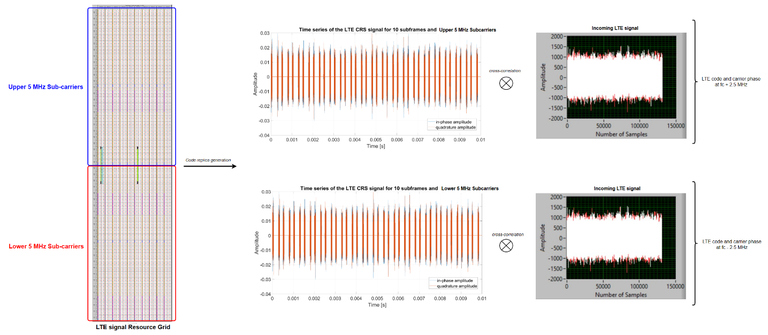Cycle-slip detection using conventional algorithms by tracking LTE CRS signal as a two-tone signal (Applies to Research Track 1)
It has been shown earlier that LTE signals can be successfully acquired and tracked using GNSS-like time domain code replicas with a conventional receiver architecture. This allows the user to obtain reliable LTE observations which can potentially be used for positioning. The LTE signal, however, suffers from high signal multipath and freqeunt carrier phase cycle slips. In order to reliably use the LTE carrier phase measurements, an efficient cycle-slip detection scheme has to be developed. This thesis aims to achieve this by overall tracking the LTE signal has a two-frequency signal and thereby using conventional linear combinations such as the Geometry-Free and Melbourne Wubenna combinations for cycle-slip detection.

The thesis objectives can be outlined as:
- Generation of new code replicas for LTE CRS signal for Upper 5 MHz Subcarriers and Lower 5 MHz Subcarriers
- Adaptation of Bump Jump for measured LTE CRS correlation function for 5 MHz bandwidth
- Optimization of MuSANT configuration for two-frequency tracking of LTE CRS signal using the generated code replicas
- Using MuSNAT LTE observations to form Geometry-free and Melbourne-Wubbenna combinations Feasibility analysis of using GF and MW linear combinations for cycle-slip detection
What we expect from you:
- Having a basic knowledge of MATLAB programming
- Basic knowledge about GNSS
- Basic Knowledge about LTE cellular signals, but not mandatory
Duration: 6 Months
Start Date: To be discussed
Contact Person
M.Sc. Muhammad Subhan Hameed
Institute of Space Technology and Space Applications (ISTA)
Faculty of Aerospace Engineering (LRT)
Universität der Bundeswehr München
Werner-Heisenberg-Weg 39, 85577 Neubiberg, Germany
Phone: +49 89-6004-2546, Fax: +49 89-6004-4156
Email: muhammad.hameed@unibw.de; Building 61, Room 1108